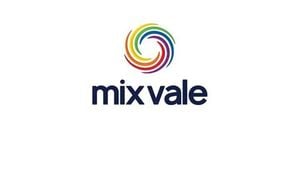Amazon’s much-anticipated foray into the world of autonomous ride-hailing has officially hit the streets of Las Vegas, as Zoox launched its fully driverless robotaxi service on September 10, 2025. The debut marks a significant milestone—not just for Amazon and Zoox, but for the future of urban transportation in the United States. For now, the rides are free, the vehicles are unlike anything you’ve seen before, and the buzz along the Las Vegas Strip is palpable.
The Zoox robotaxi service, available via a dedicated app on both Android and iOS, is the first in the country to operate with vehicles that have no steering wheel, no pedals, and no driver’s seat. Instead, these boxy, symmetrical pods—sometimes affectionately called “toasters on wheels”—are purpose-built from the ground up for autonomy. As reported by SiliconANGLE, Zoox’s CEO Jesse Levinson reflected on the journey: “Eleven years ago, we started on a journey to fundamentally rethink transportation. The idea for Zoox was never to make a car drive itself; it was about creating an entirely new mode of transportation.”
For visitors and locals on the Las Vegas Strip, the process is as simple as opening the Zoox app, requesting a ride, and waiting for one of the company’s electric pods to roll up. The app provides estimated pickup times, real-time arrival info, and even a help button inside the vehicle for passenger support. But don’t expect to be whisked off to just any destination; for now, Zoox’s service is limited to a handful of hotspot destinations, such as Resorts World Las Vegas, the entertainment complex AREA15, and Topgolf. As Business Insider noted, users must be within a geo-fenced area to order a ride, ensuring that all journeys remain within the company’s carefully mapped testing zone.
Why the limited scope? According to Zoox, it’s all part of a live testing approach—encouraging riders to get comfortable with the technology and provide feedback before the service expands. "With the launch of our fully driverless ride-hailing service using a purposefully designed robotaxi, we’re thrilled to be part of this groundbreaking journey," Zoox CEO Aicha Evans said in a statement quoted by the Associated Press. The company has deployed approximately 50 robotaxis between Las Vegas and San Francisco, with most of them currently in Las Vegas. Over time, this fleet will scale to meet increased demand, and new destinations will be added along the Strip in the coming months.
What sets Zoox apart from competitors like Waymo and Tesla is its commitment to a fully purpose-built vehicle. Unlike Waymo, which retrofits existing models from carmakers like Jaguar and Hyundai, or Tesla, which uses its Model Y for its Austin-based robotaxi service (with a purpose-built Cybercab on the horizon), Zoox’s pod is a clean-sheet design. Each vehicle is about 3.6 meters (11.8 feet) long, fully electric, and features two bench seats facing each other—no driver’s seat in sight. There’s no steering wheel, no pedals, and no need for U-turns; the pods can move forward and backward equally well, thanks to their bidirectional design.
The technology under the hood (or, more accurately, embedded throughout the pod) is just as impressive. Each Zoox vehicle is equipped with lidar, radar, high-resolution cameras, and infrared sensors that provide a 270-degree field of view at each corner. This overlapping array eliminates blind spots and allows the vehicle to detect obstacles, pedestrians, and other vehicles—even in low light or adverse weather. According to CNBC, this is the first time self-driving rides are being offered to the public in a vehicle designed specifically for autonomy from the ground up.
Of course, the launch didn’t happen overnight. Amazon acquired Zoox in 2020 for a reported $1.2 billion (some outlets cite $1.3 billion), betting big on the promise of driverless mobility. Since then, Zoox has quietly been testing with private entities in Nevada, including shuttling guests at Resorts World casino and hotel. But the public launch in Las Vegas marks the company’s official entry into the U.S. robotaxi market, alongside heavyweights like Alphabet’s Waymo and Tesla.
The timing is notable as well. Just a month before the launch, the National Highway Traffic Safety Administration (NHTSA) granted Zoox the first-ever exemption for a U.S.-made driverless vehicle under its expanded Automated Vehicle Exemption Program. As reported by the Associated Press, Transportation Secretary Sean Duffy said the exemption would help American-made autonomous vehicles better compete with Chinese rivals. This regulatory green light was crucial for Zoox, enabling it to operate its unique pods on public roads without the traditional controls required by law.
Looking ahead, Zoox’s ambitions stretch far beyond the neon lights of Las Vegas. The company has opened a waiting list for its next target city, San Francisco, where Waymo already operates paid autonomous vehicle services. But Zoox’s plans don’t stop there. As reported by multiple outlets, the company aims to expand to additional markets, including Atlanta, Los Angeles, and Miami, and has set a goal to manufacture 10,000 robotaxis each year to support its growth. Marisa Wiggam, a Zoox spokesperson, told Business Insider, “The majority [of our vehicles] will be in Las Vegas, and over time, this will scale to both markets to meet increased demand.”
Despite being a late entrant compared to Waymo—which already operates in Phoenix, San Francisco, Los Angeles, Atlanta, and Austin—Zoox believes its purpose-built design gives it a unique edge. As the robotaxi race heats up, with Waymo expanding into Miami, Washington, D.C., and Dallas, and Tesla prepping its Cybercab for next year, the competition is only getting fiercer. Notably, Waymo has even begun testing vehicles in Seattle, right in Amazon’s backyard.
For now, the Las Vegas launch is a live experiment—one that could shape the future of urban mobility across the U.S. and beyond. The rides are free, the technology is cutting-edge, and the city’s visitors are getting a front-row seat to what could be the next big leap in transportation. As Zoox’s CEO put it, the company isn’t just making a car drive itself; it’s attempting to redefine what a car can be. With the Strip as its proving ground, the world is watching to see if this bold bet pays off.
As the sun sets over Las Vegas and the Strip’s lights flicker on, Zoox’s robotaxis quietly ply their routes, offering a glimpse of a future where the only thing missing from your ride might just be the driver.





